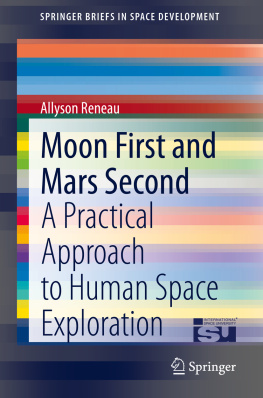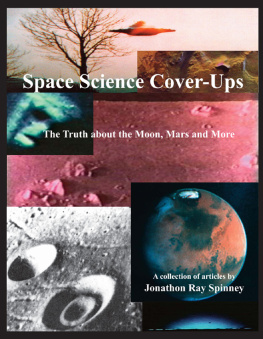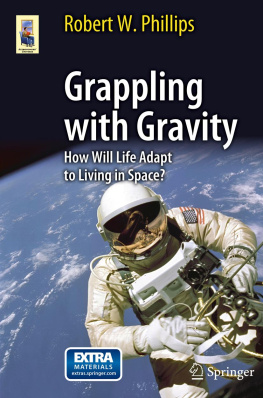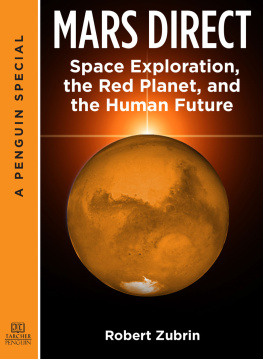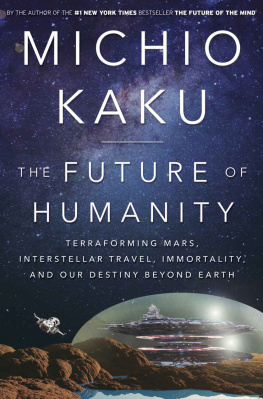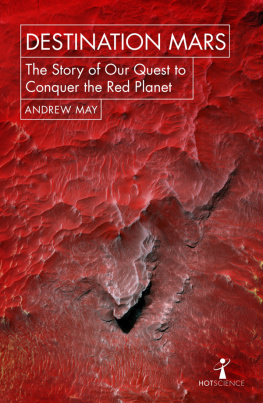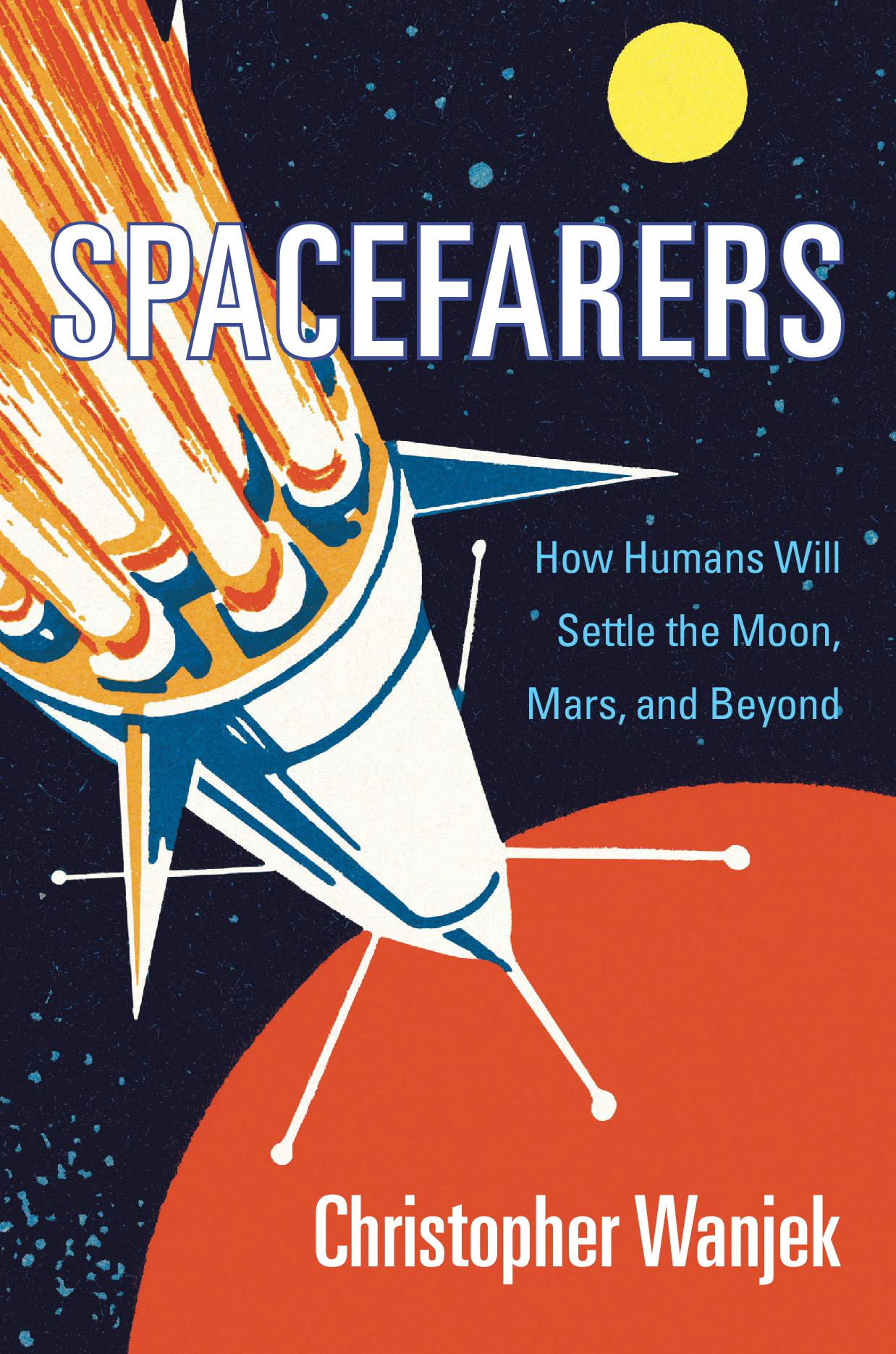Names: Wanjek, Christopher, 1967 author.
Title: Spacefarers : how humans will settle the Moon, Mars, and beyond / Christopher Wanjek.
Description: Cambridge, Massachusetts : Harvard University Press, 2020. | Includes index.
Subjects: LCSH: Astronautics and civilization. | Interplanetary voyages. | Outer spaceExploration.
Living on a planet or moon far beyond the safe confines of Earth seems a cinch when you have a good animator on your team. Parachutes open and engines fire flawlessly, allowing your spacecraft to sweetly kiss the soft alien regolith, pleasantly free from menacing boulders, cliffs, and canyons. A ground shuttle is available to whisk you to the newly established base a few kilometers from the spaceport with efficiency rivaling a Japanese train. There, the scene is abuzz with able workers busily doing their partdigging, probing, pointing, building, transportingall as happy as whistling dwarfs. You pass alongside massive, golden-lit domes housing a veritable Garden of Eden, where vegetables grow lush and blight-free. You then step lightly over the threshold into the pressurized habitat, with hardly a thought for the months-long treacherous voyage you took through a soup of cosmic radiation in bone-whittling microgravity. And, when you finally make it to your stylish living quarters, you lie back on your bed and think, gee, if only everything worked this well back home.
Most plans for space settlements look this good on paper and in the animated videos. But the devil is in the details. Mars, should that be your destination, is as frigid and lifeless as the Earths South Pole, only without the luxury of breathable air. Despite claims that we could go to Mars today with current technology, much still needs to be worked out to ensure this wouldnt be a suicide mission. The formidable solar and cosmic radiation exposure that travelers would encounter during the nine-month flight to Mars (as well as during the return) is considered by some scientists to be a showstopper. Landing safely on the red planet remains a dicey proposition; the majority of landers we have sent have failed. Converting carbon dioxide in the Martian atmosphere to oxygenrobotically, in advance of our arrivaland storing it in pressurized tanks for astronauts when they get there is an untested technology. The same goes for extracting water and fuel in situ for the return tripfeasible, but difficult to pull off even on Earth. And growing potatoes? Alas, the Martian soil likely contains toxic levels of perchlorate that would need to be removedagain, by a technology still under development.
The Moon, although much closer to Earth than Mars, is no tiptoe through the tulips. The radical temperature fluctuationfrom minus to positive 120 degrees Celsius (250 degrees Fahrenheit) between the two-week-long night and day on the lunar surfacemakes for a challenging long-term stay. And then theres all that solar and cosmic radiation showering down on the surface. Plans to deal with these challenges include sending a robot to build protective domes for shelter made from the lunar regolith, an unproven technology. And then? Well, as they say, Rome wasnt built in a day.
Thinking big is important. I began writing this book in the early spring, when my small garden plot was weed-free and redolent with the smell of rich, dark-brown dirt, evenly spread in neat squares. With a dozen or so packets of seeds in my hands, a verdant future lay before me. Much like the astronomy animators, I had it all mapped out. The sunchokes will go there, I said, in the back on the north side, because they are the tallest. Ill plant the beans just in front of them so that they can use the sunchokes as a natural trellis. So clever. Ill plant fava beans, too, because they are so tasty yet so expensive in the stores. In the front Ill plant leafy greens in succession, week by week, which will produce a daily salad straight through to the fall. Tomatoes. You gotta have tomatoes. And big winter squash, like one of those massive blue Hubbards that taste great and store so well. Perfect.
Then came an unusually cold April, colder than March, that killed half of what I had planted, followed by an unusually wet May that washed out nearly the rest. And you know whats funny about winter squash? Apparently, theres this little creature called the squash vine borer, Melittia cucurbitae, a species of moth that lays its eggs on the base of a well-developed squash vine in early July so that its larvae can feed safely inside the vine and reach maturity as they kill the entire plant before it can bear fruit. They seem to violate a basic tenet of biology by wiping out the very food source that they will need to rely on during the next season. Who knew?
I relay my garden woes partly as catharsis, yes, but mostly as an example of how often things dont go as planned, despite research and preparations. The unexpected occurs reliably, be it unusual weather, such as a month-long dust storm on Mars kicking up during crucial assembly of habitats, or a fly in the ointment, such as an undetected chemical blocking an essential biological reaction from taking place. NASA had its share of the unexpected in the eight-year rush to place humans on the Moon. The Apollo 1 mission ended tragically for astronauts Gus Grissom, Ed White, and Roger Chaffee when a tiny spark in a high-pressure, pure oxygen capsule environment grew instantly into an unescapable fireballa design flaw that no one had realized was there. NASA administrators later confessed to being lucky that Apollo 11 ever succeeded; Neil Armstrong had to unexpectedly manually steer the Eagle lander away from boulders to a smooth landing site with less than thirty seconds of fuel left.
Apollo 13 astronauts never landed on the Moon as intended. An oxygen tank exploded en route, an accident that would have proved fatal if not for the quick thinking and skilled actions of both crew and mission control. Yet another group of Apollo astronauts just missed a large solar flare that could have poisoned them with radiation. Many space enthusiasts are on NASAs case about not getting us to Mars, as if that were the space agencys sole raison dtre. But despite the agencys flaws, which I dont shy away from enumerating in this book, NASA isnt rushing to place humans on Mars because, reasonably enough, it doesnt want anyone dying out there. You cant launch humans to Mars on a tank of hope. We can and should go to Mars only when the risks and costs are minimized, for there is no imperative demanding immediate action. Right now, the voyage is dangerous, and the cost is exorbitant.



